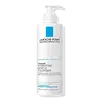What's inside
What's inside
 Key Ingredients
Key Ingredients

 Benefits
Benefits

 Concerns
Concerns

 Ingredients Side-by-side
Ingredients Side-by-side

Water
Skin ConditioningDisodium Laureth Sulfosuccinate
CleansingOctyldodecanol
EmollientPolyacrylate-33
Propanediol
SolventPolyglyceryl-2 Caprate
EmulsifyingSodium Cocoyl Isethionate
CleansingMontmorillonite
AbsorbentKaolin
AbrasiveOlive Oil Polyglyceryl-6 Esters
EmollientRice Oil Glycereth-8 Esters
CleansingPhospholipids
Skin ConditioningSodium Lauroamphoacetate
CleansingBisabolol
MaskingPentylene Glycol
Skin ConditioningSodium Chloride
MaskingSodium Phytate
Caprylyl Glycol
EmollientDehydroacetic Acid
PreservativeBenzoic Acid
MaskingPropylene Carbonate
SolventLinalool
PerfumingFarnesol
PerfumingWater, Disodium Laureth Sulfosuccinate, Octyldodecanol, Polyacrylate-33, Propanediol, Polyglyceryl-2 Caprate, Sodium Cocoyl Isethionate, Montmorillonite, Kaolin, Olive Oil Polyglyceryl-6 Esters, Rice Oil Glycereth-8 Esters, Phospholipids, Sodium Lauroamphoacetate, Bisabolol, Pentylene Glycol, Sodium Chloride, Sodium Phytate, Caprylyl Glycol, Dehydroacetic Acid, Benzoic Acid, Propylene Carbonate, Linalool, Farnesol
 Reviews
Reviews

Ingredients Explained
These ingredients are found in both products.
Ingredients higher up in an ingredient list are typically present in a larger amount.
Caprylyl Glycol is a humectant and emollient, meaning it attracts and preserves moisture.
It is a common ingredient in many products, especially those designed to hydrate skin. The primary benefits are retaining moisture, skin softening, and promoting a healthy skin barrier.
Though Caprylyl Glycol is an alcohol derived from fatty acids, it is not the kind that can dry out skin.
This ingredient is also used as a preservative to extend the life of products. It has slight antimicrobial properties.
Learn more about Caprylyl GlycolChances are, you eat sodium chloride every day. Sodium Chloride is also known as table salt.
This ingredient has many purposes in skincare: thickener, emulsifier, and exfoliator.
You'll most likely find this ingredient in cleansers where it is used to create a gel-like texture. As an emulsifier, it also prevents ingredients from separating.
There is much debate on whether this ingredient is comedogenic. The short answer - comedogenic ratings don't tell the whole story. Learn more about comegodenic ratings here.
The concensus about this ingredient causing acne seems to be divided. Research is needed to understand if this ingredient does cause acne.
Scrubs may use salt as the primary exfoliating ingredient.
Learn more about Sodium ChlorideWater. It's the most common cosmetic ingredient of all. You'll usually see it at the top of ingredient lists, meaning that it makes up the largest part of the product.
So why is it so popular? Water most often acts as a solvent - this means that it helps dissolve other ingredients into the formulation.
You'll also recognize water as that liquid we all need to stay alive. If you see this, drink a glass of water. Stay hydrated!
Learn more about Water